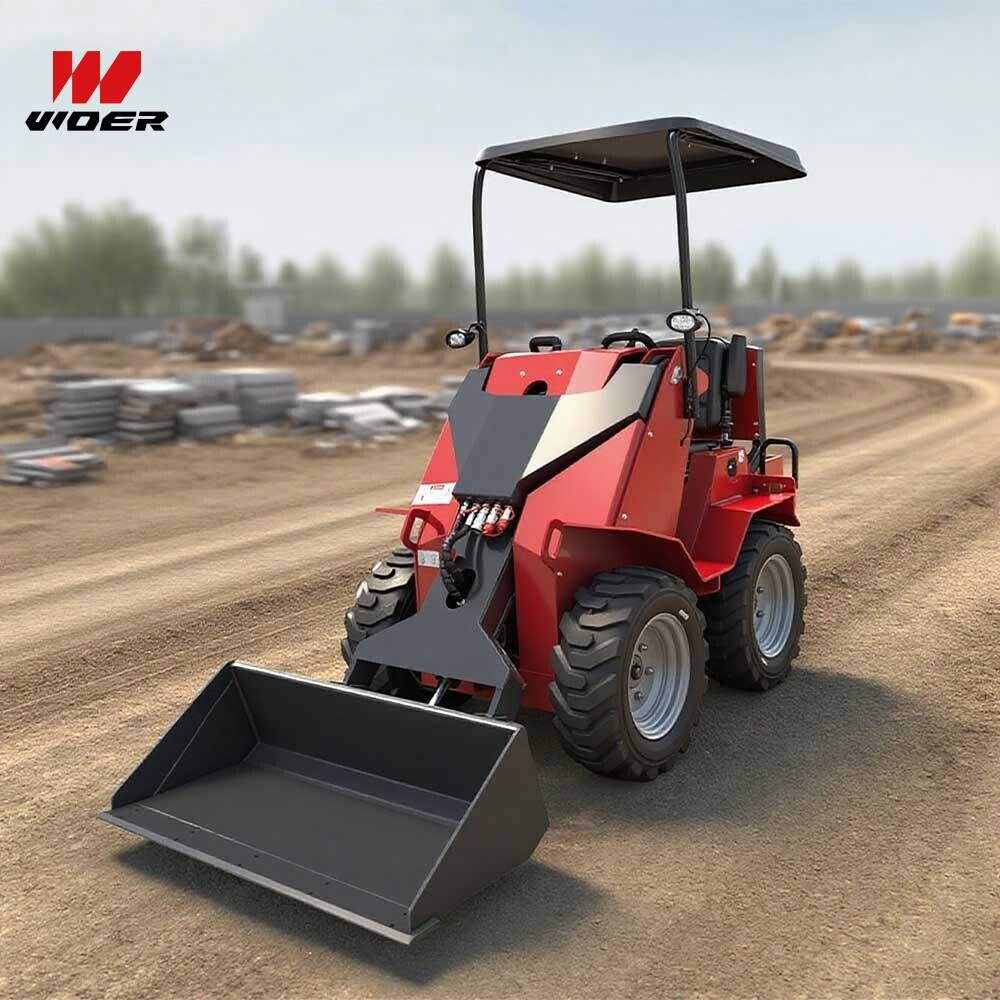Navigation
Contact us
Phone
Message

This maintenance guide helps contractors, operators and procurement teams extend uptime and lower life-cycle cost for skid loader and compact skid loader fleets through targeted inspections, service routines and procurement insights.
Overview: Why Focused Maintenance Matters
Wheel mini skid steer loader models and diesel mini tracked skid loader variants are compact skid loader assets that deliver high utilization on tight job sites. However, poor maintenance quickly increases operating cost, reduces safety and shortens service life. A structured program covering daily checks, preventive maintenance, and seasonal care ensures reliable performance of skid steer loader equipment and protects ROI for contract owners, technical evaluators and financial approvers.
Key Components to Monitor
- Engine and fuel system (diesel or petrol variants)
- Hydraulic pumps, hoses and quick couplers
- Wheel assemblies or track undercarriage
- Attachment couplers and electrical harnesses
- Operator safety systems—ROPS, seat belts, guards
Daily and Pre-Shift Checklist
Start every shift with a concise checklist to catch issues before they halt work. For wheel mini skid steer loader units and mini skid steer front loader attachments, include:
- Visual walkaround for leaks, damaged hoses, loose bolts and worn tire tread.
- Check fluid levels: engine oil, hydraulic fluid, coolant, and fuel. Top up as needed using manufacturer-specified grades.
- Test brakes, horn, lights and safety interlocks. Verify attachment locking mechanisms engage fully.
- Inspect track tension on track mini skid steer loader models and wheel lug nuts on wheeled versions; adjust per manual.
Weekly to Monthly Preventive Service
Weekly and monthly intervals should incorporate a deeper inspection and simple tasks that prevent costly repairs.
- Change engine oil and filters per hours-of-service schedule; more frequent changes for dusty or high-load environments.
- Replace or clean hydraulic filters and check for water contamination. Monitor hydraulic temperatures under load.
- Grease pivot points, lift arms and attachment couplers to minimize wear.
- Examine electrical connectors and battery terminals; clean and secure as needed.
- For tracked mini skid steer loader units, clean track frames and inspect sprockets, rollers and drive motors for metal shavings or abnormal wear.
Engine, Fuel and Emissions Considerations
Whether managing a china skid steer skid steer loader or a premium import, follow engine-maker guidance. Diesel engines in compact skid loader platforms require fuel filtration and water separators; water in fuel causes injector damage and power loss. For petrol-powered service mowers or combo equipment, be aware of ethanol-blended fuels’ effects on seals and storage life.
Record emissions-related maintenance to comply with local standards (e.g., EPA, EU Stage) and maintain resale value.
Undercarriage: Wheels vs Tracks — Comparative Care
A short table below summarizes maintenance focus areas for wheel and track configurations:
Hydraulics, Attachments and Quick Couplers
Hydraulic systems are the heart of skid steer loader equipment. Maintain clean fluid and robust filtration. Check couplers for wear and proper locking. For contractors using mini skid steer front loader tools, test attachment tilt and flow under load to detect cavitation or leaks early.
Common Faults, Diagnostics and Troubleshooting
Keep a running log of recurring issues—this helps technical evaluators and service teams identify systemic faults. Common symptoms and first actions:
- Loss of lift: check hydraulic fluid level, filter, and pump pressure.
- Engine surging: inspect fuel filters, air intake and injectors.
- Track slipping: verify tension and inspect drive sprockets for wear.
Standards, Safety and Documentation
Adopt recognized standards and safe work practices. Reference ASTM and EN guidance for protective guarding and ROPS certification where applicable. Ensure machine logbooks are current for warranties and for EEAT demonstration to procurement stakeholders and auditors.
Procurement and Total Cost of Ownership (TCO)
When evaluating new fleet additions, compare wheel and track variants, factoring in maintenance intervals, serviceability, attachment compatibility and local dealer support. For international sourcing, vet suppliers such as shandong skid steer loader manufacturers and confirm spare part availability. Some vendors advertise incentives—note claims like free shipping cheap mini skid steer loader this can reduce upfront cost, but evaluate long-term parts and service budgets.
Consider lifecycle elements: fuel type, expected utilization, resale value and downtime costs. A compact skid loader with robust service documentation often yields better TCO than a lower-cost unit lacking support.
Case Example: Jobsite Reliability Improvement
A mid-sized contractor reduced downtime by 40% after standardizing maintenance across a mixed fleet of wheel and track machines. Key actions included daily checklists, centralized parts inventory and training for operators on routine greasing and pre-shift inspections. Records helped justify investment in two diesel mini tracked skid loader units for soft-soil projects and kept wheeled compact skid loader units for paved environments.
Storage, Transport and Seasonal Care
Store equipment indoors where possible; stabilize fuel for long-term storage, especially petrol-powered accessories. When transporting, secure attachments and use appropriate tie-down points—this protects the machine and reduces insurance claims during transit.
Frequently Asked Questions
How often should hydraulic oil be replaced? Replace based on manufacturer hours; typically every 1,000 hours or sooner under heavy-duty conditions. Can I switch between tracks and wheels? Some mini skid steer loader with track systems offer quick-change options, but verify hub compatibility and warranty implications.
Why Choose Us and Next Steps
We combine field-proven maintenance protocols with procurement guidance to help contractors maximize uptime. For integrated solutions, we can advise on fleet configuration—whether a mix of wheel mini skid steer loader and track mini skid steer loader suits your projects—and provide service training for operators and mechanics. Explore complementary equipment such as Made In China Golf Petrol Professional Wheel Commercial Lawn Mower for grounds maintenance workflows linked to compact equipment fleets.
Contact and Service Offer
For a maintenance audit or fleet TCO assessment, request a site visit and customized service schedule. Our team supports contractors, technical evaluators and procurement leads with data-driven recommendations to lower lifecycle costs and improve safety compliance.

This stunning beach house property is a true oasis, nestled in a serene coastal community with direct access to the beach.
Contact
West Street, Melbourne Victoria 3000 Australia